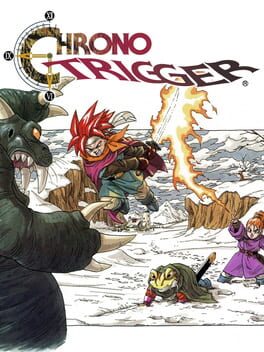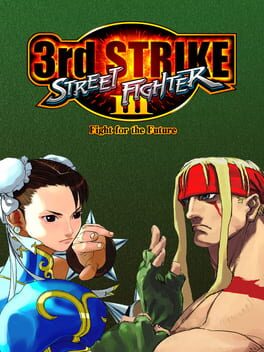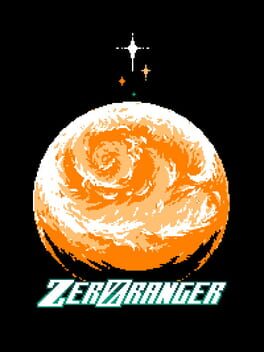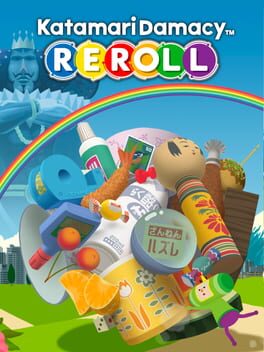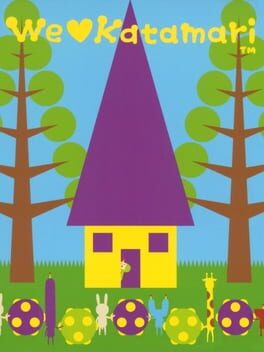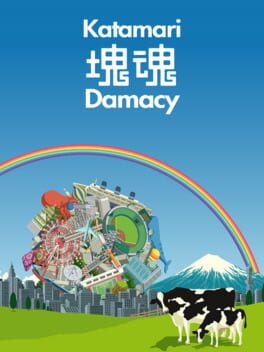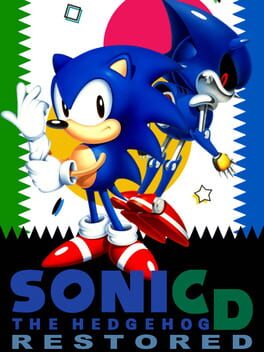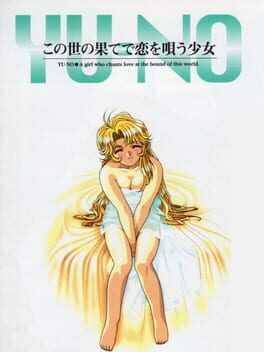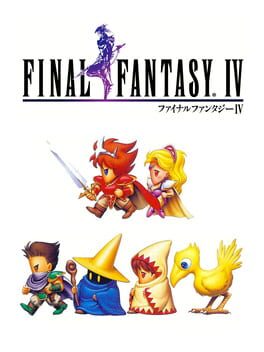JordanResin
"A wandering SNESer. He comes and goes like the wind..."
> Current Curiosities List
___
> Best of 2021
> Best of 2022
> Best of 2023
___
(...Star ratings? Never heard of 'em...)
Badges

Adored
Gained 300+ total review likes

Famous
Gained 100+ followers

Pinged
Mentioned by another user

GOTY '23
Participated in the 2023 Game of the Year Event

On Schedule
Journaled games once a day for a week straight

Organized
Created a list folder with 5+ lists

Busy Day
Journaled 5+ games in a single day

GOTY '22
Participated in the 2022 Game of the Year Event

Trend Setter
Gained 50+ followers

2 Years of Service
Being part of the Backloggd community for 2 years

Loved
Gained 100+ total review likes

Elite Gamer
Played 500+ games

Gone Gold
Received 5+ likes on a review while featured on the front page

Best Friends
Become mutual friends with at least 3 others

Donor
Liked 50+ reviews / lists

Gamer
Played 250+ games

Popular
Gained 15+ followers

Well Written
Gained 10+ likes on a single review

Liked
Gained 10+ total review likes

Noticed
Gained 3+ followers

N00b
Played 100+ games
Favorite Games
829
Total Games Played
043
Played in 2024
083
Games Backloggd
Recently Played See More
Recently Reviewed See More
Now...On with the Show!!
As the sort of guy who spends his nights mulling over weird Pasts and Bad Futures, Sonic CD’s gameplay fantasia is a gift. The dream of loop-de-looping into ancient history, nipping the seeds of evil in the bud, and returning to find a kinder, more harmonious world…that’s something I think we all deserve to have at least once in our lives.
The Past
I’ve heard it said that those who played Sonic the Hedgehog games as children, because of their lack of money and therefore choice, persevered past their learning curves. They, unlike so many detractors, didn’t write them off for their quirks, didn’t fling them back in the bin for failing to immediately satisfy their need for speed. Well, not me. The “classic” Sonic games were some of my first, thanks to the Mega Collection on GameCube. I fell for every beginner’s trap, failed every skill check, ran out of lives and went back to Lego Star Wars. They did not survive the purge.
But I’ll give Sonic credit, he’s more patient than his idle animation would suggest. Waited the decade it took for Mania to teach me how it’s done. You can’t enjoy a Sonic the way you might a Mario. These aren’t games about charging forward through obstacles – asserting your presence with power-ups and projectiles – but going with the flow, allowing the geometry to carry you where it will, dexterously reacting to keep the ride going. The challenge of harmonizing with progressively jagged, unfriendly zones is not just the point, it’s the joy. After that, Sonic 3 & Knuckles became my favorite, and I figured that was just about the end of that. In 2017, I concluded that the highs of Sonic’s dynamic movement are fantastic, but it’s dependent on the strength of its level design, and those lows are just distracting enough to take it down a peg. An ideal Sonic playthrough occurs as a single unbroken thought, and a big enough blunder can compromise the current.
Fans will tell you that 3 and Mania represent the series’ most successful “balance” of forward momentum and exploration. I bought that; it’s the reason I prioritized those games. Here’s the thing. Why burden either one of these goals with the needs of the other? If the issue is that these level designs become unfocused, draw themselves out, fail to wholly satisfy either inclination…well, why not have one built entirely around speed, and another based on explor– OH WAIT THEY DID??
The Present
Last year, I called Mario World a great alternative sequel to Super Mario Bros. 3. Today, I’m crowning Sonic 2 its true successor. I play Mario 3 for the action, for its perfect jump and P-speed antics, and Sonic 2 takes that premise even further – a character whose movement is determined by his relationship to the environment. Even conceptually, Sonic's mechanical direction is inspired. Where 1 didn’t have the know-how to play to its strengths, and my previous favorites interrupted themselves with major gimmicks and a needless mess of boss fights, Sonic 2 is confident in the power of its physics – rolling through concise multi-tiered stages, darting from start to finish without a moment wasted. It's endlessly responsive to experimentation, filled with hidden shortcuts and dynamic skips. I spent ages fiddling around with a loop near the end of Chemical Plant Act 1, being sure to keep Sonic on his feet to better control his trajectory, taking off at just the right angle, through a one-way gate, to finish the stage in under twenty-five seconds. The thrill of tearing through the high route in Aquatic Ruin and Mystic Cave, of picking up speed shoes to launch high above Wing Fortress, bouncing off of a suspended monitor and landing DIRECTLY in front of the boss, is priceless. Emerald Hill Zone’s opening riff doesn’t get enough love, it’s up there with DaiOuJou in its ability to hook me in from frame one. Appropriately, it's as close to an OutRun-like physics platformer as we’ve ever had. It's one of the greats because every frame of its forty-five minute run fizzles with potential energy. Ignore the Emeralds and go.
But friends, I had played Sonic the Hedgehog 2 before the year 2023. My love for it has grown to ridiculous size (Thanks in no small part to Sonic 2 Absolute), but I've respected it for some time. Even finished it. This is not a review of Sonic 2.
How ‘bout I take you down to Quartz Quadrant.
The Good Future
Sonic CD shares 2’s place at the top of the heap. Given its reputation, I could not believe how well it clicked. Overly wide, exploratory level design in action games isn’t my thing, but here, it’s less a matter of “exploring” for a number of key objects, and more about enjoying the breadth of what Sonic’s physics are capable of – shooting through massive cascading loops and rebounding up and around towering, dreamlike worlds. Coming off the heels of the first game, with an entirely separate team from Sonic 2, it’s ridiculously forward-thinking. CD preempts the conceit of Mario 64’s 3D game design by a whole three years during an age when every year played host to wild innovation across the medium. It celebrates Sonic's unique movement mechanics like nothing before or since.
I called a perfect Sonic playthrough “unbroken,” but I didn’t say “fast.” Whether you’re flying high or barreling through badniks, movement is its own reward. And while that would’ve been enough for me to give it the thumbs-up, CD does not rest on those laurels. Hit a signpost and maintain top speed, and you’ll time travel between any of three eras of the same stage. Must be the best take on Mario 3’s P-Meter there’s ever been. Smash a robot generator in the past, and you’ve earned a wonderland of a future. Hunting generators is the way the game is designed to be played, and I refuse to ever run the game without them. Beyond the fact that they encourage the intended playstyle, the consequence for failure is too tangible, too well-executed to ignore.
I have to wonder if there was a kid in 1993 whose immediate inclination was to have Sonic go to the future. When this child finally managed to do this, the coolest thing they could possibly imagine being able to accomplish in any game – Making Sonic the Hedgehog Time Travel into The Future – they wound up in an apocalyptic hellscape. The Bad Future so starkly different, so loud and raucous, that it almost feels like a joke. The stakes are clear; Sega put in the work to make you want to care about the world you're trying to save, if only to find out how great the Good Future's music must be. It'd be sick enough to have this two years ahead of Chrono Trigger, but even now, I can't think of another action platformer that attempts anything like this.
And don’t believe what they tell you, there are no bad Zones (Wacky Workbench is fun, I promise). I could swear the Japanese Soundtrack makes its already vibrant colors even more evocative. It’s exactly as complex as any game in this series should be. Its opening cutscene is everything to which Sonic should ever have aspired.
The Bad Future
Another 2D Sonic game released in 2023. We don’t have to talk about that one.
SNESSER
Videogames are for media perverts.
Really, is it not enough just watching a character perform an action from the comfort of the living room sofa? We’ve got the written word, the stage, the projector, illustration and sound, but for the weirdos among us, that doesn’t cut it. No, we just have to crawl into the screen and take up residence in their skin. We need to feel their digital knuckles scraping against the robo-flesh of their adversaries, we need to breathe the air of that post-apocalyptic wasteland and go fishing in the little streams that have formed between the cracks in the asphalt. In "A Play of Bodies", games researcher Brendan Keogh (the man responsible for my treatment of "videogame" as a single word) writes that video-gameplay creates a circuit between the player and the software. We enter the machine, and there is a “meshing of materially different bodies into an amalgam cyborg body through which the player both produces and perceives the play experience” (41).
It’s a little twisted, isn’t it? Just the slightest bit deranged?
I think about that whenever I consider recommending NieR: Automata to another person, because even if it didn't mean asking someone to take control of an android soldier inexplicably dressed as a blindfolded french maid in a billowy skirt and heels (“Taro just likes girls, man”), it still demands a degree of investment which isn’t remotely common in media. For games, it’s a high bar. I have to remind myself that even in 2023, the year when my Mom called in to rave about HBO’s The Last of Us, picking up a controller to actively involve oneself in a play experience of this kind is still a lot to ask. That show managed to reach an audience of people who had never considered conversion into one of Keogh’s cyborgs. If even one of them asked me which videogames to start with, Automata wouldn’t make the shortlist. You’ve already gotta be quite a ways down the rabbit hole. You have to love giving yourself over to and becoming entwined with these things for hours at a time. You have to be aware of their conventions. It’s one for the video-perverts.
Luckily, there are plenty of us to go around if you know where to look. Media literacy is an odd thing. I’m enough of a ridiculous videogame/media cyborg person that I might’ve written off Automata as passé on first blush; a little too indulgent in some unfortunate tropes and well-trodden themes.
If you’re just joining us, the premise is this — In the future, aliens have sent a mechanical army to conquer the Earth, forcing humanity to take refuge on the moon. We’ve constructed a squadron of android soldiers to take back the planet, resulting in an ongoing proxy war between the two robotic factions on the surface. You, the player, follow androids 2B and 9S in their righteous quest to drive back the alien menace and reclaim the world.
Incidentally, this is pretty much the plot of DoDonPachi DaiOuJou. You have the right to remain suspicious.
I’d played my share of JRPGs, done some hacking and slashing, wasn’t terribly impressed with 13 Sentinels, seen Evangelion, Lain and Ghost in the Shell, I’ve had Space Runaway Ideon: Be Invoked in my queue since that one Hazel video, alright. I wasn’t…pressed, exactly. I didn’t discount what I’d heard about its excellence and experimentation, but I was pretty sure I knew what I’d find. No matter how you slice it, the broad questions of existential philosophy can only have so many possible conclusions. Everything is futile, or it’s not. To paraphrase Albert Camus, you either live for some reason, or you don’t. And if you do, you have to accept the beauty that you can find in whatever corner of this world you inhabit, or else rage against it and build a better one.
Really, I hoped it was hiding a perspective or a problem that would change my mind. I want to be wrong and I want to learn, my diagnosis here is so broad as to be useless to anyone. But Automata didn’t show me “The Gospel of the New Age,” it didn’t pretend it could arrive at unique conclusions about life and its meaning. Rather, it’s frustrated with the answers that have been given. It just doesn’t know how to escape from them.
SYSTEM MESSAGE
(It's gonna be a long one)
The opening says as much, states in no uncertain terms that we’re “perpetually trapped” in The Wheel of Samsara, and then drops us into a top-down arcade shoot ‘em up. I watched the rest of my squad get picked off one by one, and knew I was in the hands of a director. So let’s talk Taro. Yoko Taro, the all-but undisputed creative force behind NieR, has spoken loudly about his love for 2D shooters, and that inspiration isn’t limited to gameplay. It comes through in Automata’s premise, themes, and looping narrative. Shoot ‘em ups are about dying again and again, setting one’s own goals, finding meaning in their madness. They’re about lone pilots in their last stands to save already doomed worlds. Their characters never escape the five to seven manic stages that contain their stories. Yoko Taro may have wanted to make ZeroRanger (and if he had, it’d had said all he’d wanted to say), but given Square Enix’s requirement that it be an Action RPG, I think the team came to a solid compromise.
Automata’s control scheme is cleverly designed to seamlessly shift between 2D shooting and 3D action without twisting the fundamentals. Melee attacks, specials and evasion are all mapped to the same buttons no matter the perspective, and that’s a powerful gesture. NieR: Replicant was bent on shocking the player out of their comfort zone with shifts into text adventuring and fixed camera Resident Evil…ing, its parts as cobbled together as any of Automata’s machines (and make no mistake, I love it for that). Automata, meanwhile, is sleek. Its mechanical consistency more readily invites the player to slip into a state of cyborg-dom, even as the shape of the game morphs around you. Nowhere is this better felt than the final stretch of The Tower, and those who’ve played the game will know what I’m talking about. Whatever form it takes, whoever you are, your index finger is for shooting. Customizable chips inform your abilities and interface, and it does plenty to contextualize game elements as features of the android protagonists. Whether or not it measurably contains “zero unintended ludo-narrative dissonance,” Automata goes the distance.
But few players I know would accuse Automata of “consistency,” and for good reason. Its narrative structure is easily one of its strangest features. I wouldn’t call it subtle so much as…selectively cryptic? Kinda messy. I wouldn’t say there’s anything presented in the critical path that doesn’t serve at least a thematic purpose, but events rarely build directly on top of each other throughout the A/B playthroughs, and only the barest threads actively cause the events of Routes C/D. Much of this is by design, seeing as you’re taking direct orders from your commanding officers as soldiers of YoRHa, simply doing as you’re told without the agency to decide your path, but I wouldn’t argue if someone found Automata “half-baked.”
I’m getting ahead of myself — I’ve seen it discussed that the mystery of the machines’ sentience is badly handled, that it’s too obvious and heavy-handed right from the get-go, but I think it’s clear that’s not the question being raised by the story. It’s not “do the machines really have emotions,” it’s “why are the androids so bent on deluding themselves into believing that the machines lack emotion?” What’s so qualitatively different about the two robot factions? What drives people to ignore the pleas of others and deny their personhood? We find them in distress in the desert, quite literally birthing two beings called Adam and Eve. It takes just three hours to encounter a village of machine pacifists, and, when he’s no longer able to deny their sentience, 9S just pulls out some other lame excuse to maintain his worldview. This might be frustrating as a player, to be required to carry out actions you don’t believe in for the sake of progress through a story. You could call it stupid, maybe cruel, or you might appreciate that your doubts echo those of the characters.
But some cracks begin to show as you await each revelation.
_________________________________
After a climactic battle with a gargantuan mech results in the loss of your sidekick, you follow a trail of breadcrumbs to a rusted elevator in the depths of a dimly-lit cavern. You’re warned it may be a trap. Both you and your character shrug off the suggestion.
At the bottom of a long descent, you emerge beneath a subterranean sky, a void of white. Before you, an eerie facsimile of civilization. The architecture is reminiscent of a metropolis that once stood, but colorless and incomplete. One of the top three songs in the game starts up.
Pressing forward, you find the bodies of androids strewn about the scenery. Further and further, until you come face to face with the perpetrator. You have a dramatic rematch with Adam. Philosophy is spouted, combat ensues, and you kill him. You retrieve 9S.
You then…report back to the Resistance Camp and receive your next assignment.
The Copied City never becomes relevant again.
_________________________________
(Tangentially, Adam and Eve confront our heroes a total of three times, which doesn’t give them much room to interact beyond being born and dying. This is interesting on the face of it, but none of these interactions shake up the status quo. Killing Eve supposedly alters the machine network, but not in a way that interferes with its normal functioning. 9S then enters the machine network during the first ending, and little seems to come of it beyond perhaps the intermittent vignettes you receive before and after boss fights during Route B. Tragically, none of these vignettes seem to influence 9S’ thoughts or actions later on)
I’m not here to slap a “bad writing” stamp on NieR: Automata, despite what I'm about to say. Honest. All of this is kind of fascinating to me, partially because it’s just so dang weird. The fact that Adam and Eve’s story doesn’t affect the characters as much as it should might speak to how little regard the androids afford machines in general. The fact that the status quo is not affected by any of these wild moments sort of makes sense when you consider the cyclical state of the setting. Maybe. But a certain thought cloud began to hang over me as I continued playing, and then it grew as the story revealed itself.
Any suspicions I had were confirmed by Taro’s 2014 GDC Talk where he lays bare his process. Before arriving at any character or premise, he whips up an emotional climax. He decides where he wants his audience to cry, and then works backward to create context for that moment. I’d like to be charitable, everyone expresses themselves differently, but yeah, it’s hard not to look at this and find some Hack Behavior. Taro does explore themes and questions and characters, but it’s obvious when a moment is crafted in isolation for the sake of shock value, and it doesn’t help that many of them lack long-standing consequences. Of course there are great, hard-hitting scenes (the intro to the game’s second half comes to mind), but I know when I’m being punked. And as it pulls this sort of thing again and again, it becomes easier to see the mirrors behind the smoke. Final Fantasy VI’s opera setpiece might be very obviously tossed in there, but the development that happens in and around it, before and after, makes it worthwhile.
And so is Automata, just not for the same reasons. I was convinced at one point that it had actually been about the conflict between A2 and 9S all along. Whatever inconsistencies there’d been or questions that had gone unanswered, everything had been built to explore how they’d end up as ideological opposites. But for that to be true, A2 herself would’ve needed more time. I’ve got just enough of a speedrunner’s brain that I enjoyed replaying the first third as 9S, especially for recontextualizing his role in the duo and containing late-game reveals only he was privy to. Likewise, we’d have needed to see what made A2 who she was at the beginning of the story. After ages of aimless rage and rebellion, it should have taken more than just one late-game subplot to alter her worldview (2B-pilled or not). It’s a testament to the music, pacing and performances that I was able to buy her character, but it would be a stretch to say that the story is squarely about her.
Maybe it’s become clearer as Taro has progressively dominated this write-up, but I don’t feel this is a game about its characters, but a mind at odds with itself. It won’t be obvious if you’re only reading this review without having played the game, but NieR is the story of a man grappling with existentialists, admitting that none of their perspectives have managed to convince him or offer a satisfactory route to purpose. Maybe he’s frustrated that none of them click. Whether you’re driven by fear or beauty or selfishness, spirituality or revenge, we’re all made of the same stuff, and we’re all going to the same place.
I don’t think it’s unfair to criticize Automata for failing to thoroughly explore those avenues of meaning. Fair or not, I’ll posit this dismissal comes from the honest place of a person who’s become lost and resentful toward structures built to fabricate meaning at the expense of others. Religion and love and community are all represented in unflattering extremes, and having one’s purpose stripped away is immediately met with violence against oneself and others. Even when I disagreed or wanted more in the way of nuance, I had to admit that I could sympathize with the author. Around the time I played Automata, someone I know told me that life would not be worth living without the existence of G-d. He would not get up in the morning. His family couldn’t possibly be happy.
It’s a good thing He’s up there, then.
…Isn't it?
So we play as this torn mind, inhabiting both characters and driving them toward opposite objectives. These androids are only granted agency by the player, after all. Whichever of the two you gravitate toward, each must be defeated by the other.
It’s a bleak lens, and it’s not shy about that. Maybe it shouldn't be any sort of surprise that Automata’s ending invites its players to rebel against its worldview, unite and collectively destroy it (and in the form of a vertically-scrolling shoot ‘em up, no less). It wants us to demonstrate that we can find purpose in each other. As far as I can tell, Taro wants to be proven wrong. He wants to learn something. Of course, it could be that I only found what I wanted to see.
But that’s not what I saw in the moment. Ending E didn’t hit as hard as I’d wanted it to. I nodded in acknowledgment of the gesture, knew that it was a modern Shigesato Itoi finale. Automata contains some real sparks of bottled magic, but it rarely managed to pull me out of my own head, maybe because the mind behind it was made so painfully visible. It never brought me to tears (TieRs?). Despite the gorgeousness of its soundtrack, I felt more distant than I’d have liked to be. I became uncomfortably aware of myself in that desk chair, holding a plastic videogame controller, watching my screen flash with the light of real people who’d given up their save data to help me, someone they’d never meet.
It felt like getting caught in the act.
If you’re short on time or haven’t played it, here’s what I’ll say: 1991’s SquareSoft’s Final Fantasy IV is, in my opinion, best enjoyed by those who can appreciate a short, dense, no-frills, melodramatic JRPG. It’s an essential game in the genre and, for whatever my judgement is worth, good. If that sounds like your cup of tea and you don’t know anything else, then I’d recommend playing it and forming an opinion before reading (if you regret it, you can bug me later).
This is a retrospective of where I was when I first played Final Fantasy IV, and a rundown of where I'm at now. I'll try not to spoil too many other games in the process.
On Final Fantasy IV (Or — "Jumping the Lunar Shark”)
It was all Chrono Trigger’s fault. A series of coincidences had guided me toward that prolific blend of Final Fantasy and Dragon Quest, and I waltzed into 2019 wide-eyed and fascinated by a genre I'd once thought laughable. So now, having marveled at the results of their combined effort, it was time to pick a side for my next adventure. Yuji Horii beckoned to me from across the void, his latest Dragon Quest installment due on my game console that Fall, but Hironobu Sakaguchi leapt in with an ace up his sleeve. Not only would the ridiculously popular Final Fantasy VII release on Switch by March, but he’d recently converted a good friend of mine with its Steam version. So, in anticipation of that day, I began the new year with (let’s face it) the series’ foundation.
Dusk had settled over the city skyline, silhouettes of heavy coats retreated into apartments for blankets and coffee, and I was conjuring meteors to blow up an incarnation of living hatred. Final Fantasy IV had been my winter game, a boundless ongoing saga, and at last I’d arrived at the end. It should’ve been triumphant, the climactic conclusion to an epic quest spanning countries, realms, transcending even the planet itself. Finally I’d experienced a classic that meant so much to so many, that had contributed massively to the development of a genre and a generation of video game players. As Cecil and Rosa stood before their beloved crew of allies turned friends turned surrogate family members during their coronation, I felt a wave of relief as I realized it was finally…over with. I’d crossed Final Fantasy IV off of my bucket list.
But something about it lingered, and still does. I think back to Final Fantasy IV all the time. When ruminating in quiet moments, I sometimes rewind and play back the burning of Mist, the bombing of Damcyan and the death of Anna, the raid on Fabul and Rydia's return, and I can appreciate how pieces of the narrative seem to hold more layers than its charmingly chunky sprites let on. It’s hard not to notice specks of its influence in nearly every successive game in the genre, to say nothing of the groundwork it laid for the future of its own series. Though I can pinpoint the precise moment when my fascination clambered its way up and into a fat chocobo, there’s a lot to admire, even love about its dizzying ambition. It’s evident from the moment Uematsu’s incredible John Williams-inflected Red Wings theme booms over its soaring intro. Here’s where it got its hooks in me:
An earth-shattering event in the opening hour of the game has the player guiding a condemned Cecil Harvey through a scorching desert, burdened by the weight of his armor and an unconscious orphan while fending off hordes of vicious monsters. Until now the player has only seen flashes of the Dark Knight’s festering conscience over the atrocities he’s committed, but now he becomes decisive. Despite injury and lack of direction, with nobody to hold him to a moral standard, Cecil takes his first steps toward redemption by taking responsibility for the last surviving member of a village he’s inadvertently incinerated. It’s a powerful and understated gesture, represented only through the player’s own desire to press on through the overworld map and clobber goblins in intermittent random battles (curiously, a blue-clad hero would usher a green-haired girl to a desert oasis following an act of terrorism a second time just two games later). Subtle pieces of characterization like this permeate the battle mechanics. Cecil’s special ability as the Dark Knight is to cut a fraction of his own health for the sake of unleashing a powerful attack, evocative of his self-hatred, which is countered by Rosa’s potent healing spells. It even develops when Cecil becomes a Paladin and, effectively, becomes more like her. This is one of the key elements which makes Final Fantasy IV and other games of its ilk so fascinating to me. Since the developers were working in a time of abstractions, they had to find ways to use the language of the genre to convey their intent. How do you make a character feel like a person in a role-playing game? Square took to the tools they’d developed over the three previous installments and rearranged them in the shape of a drama.
Where previous entries in the series (and the next) would be content to keep classes significant only for strategic purposes, Final Fantasy IV uses them for character development as well. Palom’s rambunctious attitude is evident when he’s casting devastating offensive spells as a black mage, and even though he has a rocky relationship with his sister Porom, their “Twincast” ability assured me that they could get along when necessary. Yang’s focused and calculated physical combat maneuvers are emblematic of his discipline, which take time to build, but pay off in spades. Rydia refuses to cast fire spells until Rosa can help her come to terms with the aforementioned arson of her village, and eventually matures to the point at which she’s willing to trade in her aptitude in white magic for greater proficiency in those offensive abilities. Kain's bouncing between both sides as he’s repeatedly mind-controlled by Zemus is reflected in his elongated disappearances during battle as a leaping Dragoon. I’m half-joking with that last one, but this stuff really is all over the place. You might say I’m giving it too much credit given the simplicity of the characters, most of them are little more than archetypes, but the handful of ways those archetypes are expressed (and in some cases developed) still leaves an impression when every battle becomes an opportunity to participate in characterization.
If the DS remake is any indication, with its cinematic cutscenes, voice acting and the like (which nuke the pace from orbit), the Square Enix of today doesn't value these techniques as I do, but this is precisely the sort of thing that makes classic RPGs so special, and particularly Final Fantasy IV. It takes advantage of its game-dom to find routes to the player’s empathy using interactive systems. I mentioned that Cecil’s metamorphosis was one of my favorite sequences, and it’s not just the implication for his character, but the execution which makes it so memorable.
The setup is fantastic. A lone, weary Cecil is left to take refuge in Mysidia (the very place he pillaged as captain of the Red Wings), and the villagers try to tear him apart until the elder advises him to take to Mount Ordeals. Only there can he be purified of his sins and become a holy Paladin.
On arrival, the shambling undead who stalk Mount Ordeals take minimal damage from Cecil’s sword, emphasizing his nature as an agent of evil, unable to stand against it. He has to rely on the support of his allies, twin mages Palom and Porom and the elderly sage Tellah, to help him find redemption. His dependence reaches its apex as they stand against one of the Four Elemental Dante’s Inferno references and resident spelling bee stumper “Scarmiglione” (or Milon, if you like being wrong) and kick him off of a bridge to the beat of The Dreadful Fight. At the summit, the group crosses a rift into a mysterious chamber, and just as Cecil receives the Paladin’s blade and transforms, a manifestation of his past wrongdoings, fully clad in the armor of the Dark Knight, emerges from his reflection to face him. No matter what the player tosses at their doppelgänger, it cannot be defeated. “A true paladin will sheath his sword,” a voice whispers into the text box at the top of the screen. Cecil’s evil half pummels him again and again, and it can easily kill the player if they aren’t careful. It’s only when they recognize the metaphorically and mechanically self-destructive nature of the Dark Knight that they hold back to defend and heal themselves with Cecil’s newfound power, and his shadow dies expending the last of its violent energy. The player wins by refusing to fight, rejecting self-destruction and embracing love, and they do it using Final Fantasy IV’s battle mechanics. He takes up the Paladin armor and he returns to level one, but quickly ascends beyond his previous limits. It’s awesome. It’s Final Fantasy IV at its best. Just seventeen hours to go.
So yeah, here comes the heel turn. If you want a gauntlet of battles that’ll put your RPG combat skills to the test in a world of exhilarating twists and turns, you’ll find what you’re looking for in Final Fantasy IV. Part of me loves that about it, that I can boot it up and know exactly what I’m getting myself into, that I won’t have to bother with character customization or stat manipulation and just get the dungeon-crawling monster-fightin’ show on the road. That strict attention to pacing, party composition and encounter design is a quality it shares with MOTHER 3, Dragon Quest V and Chrono Trigger, but it’s all about the execution. These games weave the story into progression in meaningful ways, carefully constructing both elements alongside one another to great effect. FFIV was slated to do exactly that.
But in one hilarious moment, it became all-too clear to me that Sakaguchi had no idea where this was going.
Co-writer and director Takashi Tokita would tell you that they were only able to cram one measly fourth of Final Fantasy IV’s sprawling, epic script into the original cartridge. As Patrick Roesle of socksmakepeoplesexy.net once said (in an excellent write-up on the topic), “even though Square Enix proclaims itself a shaper of unique multimedia interactive art experiences, the SquareSoft that created Final Fantasy IV in 1991 made video games.” Which is to say, “bull[crap].” You can’t tell me that Sakaguchi had carefully and painstakingly deliberated over the implications of a man leaping off of an airship and strapping himself to a bomb to “seal the entrance” of a colossal chasm in the Earth and surviving. “JUST THROW IT, YOU MORON,” I howled (telepathically) at the screen. This guy had a daughter at home.
Final Fantasy IV began as a tale of self-reflection, revolt and redemption, and it is that for a good while. Cecil travels the world, proves himself to those he’s failed, and recruits a group of companions from across a variety of cultures and kingdoms, all to stand against the corruption of his homeland. Then they return to Baron, and so begins the slow descent into the Twilight Zone. I made a face when the evil king was revealed to be Cagnazzo all along, having killed and supplanted the real king. But wait, wasn’t that real king still the guy responsible for raising Cecil as a Dark Knight? Maybe Golbez had a hand in that, he seems to know what he’s doing. I thought the revelation that Kain had been mind-controlled the entire time was silly, but it was nice having him back in the party. Then, after a fierce fight with Barbariccia (Valvalis sounds cooler) and a thrilling escape to…Cecil’s room(?)…Kain’s gotta break the news. Golbez only has four crystals. Only? Whaddaya mean, isn’t that four outta four? Cid drops this gem of a quote, “So the legends are true after all!” (“Legends,” to which not one character has even tangentially referred over the course of this entire game), and this could’ve been anything. Instead, there are four more crystals underground. But, ya know…They’re dark crystals. They're darker.
Tellah died and took the story with him.
That was my first impression as a recently-converted Chrono Trigger shill in 2019, but even that wasn’t entirely fair. All of this plotting, this attention to the staging of events with animated characters and personalities whose crisscrossing actions and motivations contextualized the adventure, was completely unheard of. Dragon Quests I through IV were less “narratively-driven” and instead centered around exploring worlds whose goals and scenarios provided players the thread to weave their own experiential stories. Nobody does it like Yuji Horii, and if Final Fantasy had stayed its course, it’d have remained an awkward, lesser Dragon Quest. And so, Sakaguchi sought out and studied under Shonen Jump editor Kazuhiko Torishima in an effort to distinguish Final Fantasy from that philosophy. Tokita leapt at the chance to lend his theatrical expertise, and the result speaks for itself. The story may have commitment issues, but its manga-like attention to escalation and efficient characterization can’t be denied. In no previous JRPG did the party sit around a campfire mid-dungeon to discuss their worries, hopes, and doubts. Rarely did the player’s units bicker amongst themselves, turn against each other, or change their minds. Everyone is given their own animated identity, especially impressive given how few overworld sprites there are. It’s just unfortunate that the game’s chosen structural devices are horribly, goofily brittle.
I didn’t feel the need to mention the crystals up until now because…what’s there to say? Cecil just needed something precious to steal from the Mysidians. Baron needed justification for conquest aside from “just cuz”. They gave our heroes an urgent, tangible reason to seek out and protect other countries and people. Now you can forget about that whole theme of agency and redemption because it’s crystal time. It’s far less graceful about swapping party members around (now they all die (except not really)), Kain gets mind-controlled a second time, they recruit an edgy ninja named Edge whose parents have been turned into monsters by a mad scientist, they go inside a giant robot (and hear the best song in the game), we find out that Golbez was also mind-controlled so he’s a good guy and he’s Cecil’s brother and their dad was an alien, and one of the aliens has been behind everything from the very beginning so they take a spaceship to the moon to kill him (if you squint, you might notice that almost all of these points made their way into Final Fantasy VII in some form or another).
The tonal whiplash of fighting aliens with Cecil, the man who burned down a village, rescued an orphan, and spent the first quarter of Final Fantasy IV paying recompense for war crimes and becoming a holy knight, never left me. In fact, the sheer strangeness of later events got me to start poking holes in earlier bits of the story. What’s the point of Rydia’s mother’s soul being connected to the Mist Dragon? Cecil incinerated the entire village, I could’ve believed that she’d burned to death. How did Rosa reach Kaipo on foot? Couldn’t Cid have just taken her there on an airship? How did Edward end up all the way in Troia if he drowned in the ocean? Why does Leviathan attack the party if he’s actually a sapient, moral being? Why does Cecil sleep in his armor? How did Yang get captured and mind-controlled if he drowned in the ocean? I'm being deliberately facetious here, but the point stands. The magic began to evaporate as soon as I realized that SquareSoft had no interest in developing the premise that got me invested.
But in its place, something different bubbled into being. In spite of all I’ve said, I’ll admit that the longer I spent with Final Fantasy IV, the more appreciation and affection I developed for its bizarre, freewheeling narrative approach. It may not hold together on a literary level, but, strange as it might sound, there’s something endearing about that. The way its theatrical setup and dramatic cast dissolves further and further into incoherent chaos brings to mind a late-night tabletop campaign gone horribly wrong in all the right ways. The Dark Crystals exist because you and your buddies are having too much fun, the contrived reveals and sacrifices and even the fake-outs feel epic when the group is coming up with them on the fly around an empty pizza box, and, even as I was picking it apart with a scalpel, I couldn’t deny that familiar energy. While one half of me was laughing at the stupid alien spaceship, the other was laughing with it. Make no mistake, Final Fantasy IV is a videogame. It’s a digital monument to the joys of role-playing. If the first Final Fantasy is the manual, the fourth is the first to demonstrate its potential. There’s a reason why nearly all subsequent entries (in the entire genre) look to it for inspiration — it represents the unfiltered imaginative spirit of a team wading into their first generational leap. Final Fantasy IV is absolutely bursting with ideas, and it’s easy to get swept up in the fun of its exquisite corpse of an adventure.
And yet, it was just as easy for me to become detached from its increasingly preposterous twists and turns, and my inability to reconcile these two perspectives on my initial playthrough became exhausting. Time and reflection and revisits have tempered my judgement, but even if I never found it in my heart to forgive Cid’s idiotic sacrifice, I’d have more than enough reason to see it through.
Because I kept at it anyway, all the way to the end. I even decided to complete a handful of optional side-quests to add Odin, Leviathan and Asura to Rydia’s summons. I conquered the PSP’s Cave of Trials to get Yang, Palom, Porom, and Cid back up to speed (c’mon, I couldn’t keep Edge in the party). I had a rough go of it too, this was my first Final Fantasy. I did a frustrating amount of grinding before the Tower of Zot, a whole lot more before I could survive encounters on the moon, and had yet another sprawling session before I could give Zeromus so much as a sidelong glance without instant annihilation. Definitely a far cry from Chrono Trigger, where a rearrangement of equipment and a bit of tactical reconsideration was preparation enough, but something kept me going. Maybe it was a feeling of obligation, maybe it was the awesome ludo-narrative characterization, or maybe I’d come to appreciate the dissonant story in all of its Silver Age comic book-ish glory. I’d like to say it was the music, and I’ll get to that, but Uematsu couldn’t have done it alone. No, I think it was because, despite it all, Sakaguchi and co. had succeeded at making exactly what they’d envisioned. The game was kicking my ass, but settings and level designs were varied, enemy strategies kept me on my toes, I always felt like I had to discover and conquer whatever came next, no matter how stupid the narrative justification. I wanted to find treasure, see what was on the other side of that door, explore dungeons and vanquish monsters. Something clicked.
This wasn’t technically my first brush with Hirouki Ito’s Active Time Battle system, but it was dramatically different from the one I’d become used to. My first thought was that I preferred Chrono Trigger’s iteration of the concept, with its dynamically wandering enemies and tech system, but there is something to be said for this heavier, more direct style. You know how it goes, you’ve gotta think fast or you’ll get clobbered. Some enemies and bosses make use of it by requiring the player to bolt in during a rare opening in their defenses or wait until they let their guard down to avoid a massive counterattack. In one weird, memorable battle, a demonic wall (with a Xenomorph stuck inside?) creeps closer to the party in real time in an attempt to crush them. If it closes in, it’ll annihilate all five party members at once. Yeah, five.
This remains the only RPG I’ve played to use a five character setup, and if the ATB didn’t make things tense enough, managing five different characters at once took a bit of getting used to for a novice like me (especially after Chrono Trigger’s three character format). Still, I insisted on using “active” mode instead of “wait,” which essentially pauses the game while the player cycles through spell books and darts through their inventory, because I really came to enjoy the momentum it brought. You’d think that five characters would make things easier, but battles can get pretty frantic. If your experience was anything like mine, you found that the FFIV crew isn’t a particularly durable bunch. There’s not much the player can do to shape them, so they’ve gotta learn to deal with each character’s weaknesses by figuring out how to juggle their skills in the heat of the moment. Powerful abilities take time to perform, adding another layer of strategy to their use, and retaining the weaker abilities’ utility. Learning when and how to arrange characters in either the front or back row (and knowing who to select to strike which enemies, who abide by a similar system) according to their strengths is essential to minimizing damage taken and maximizing output (the dreaded “back attacks” made that all too clear).
With time, my appreciation for FFIV’s combat design has deepened. It may not be as solid as Dragon Quest, but they certainly hit on something here. It's energetic and nerve-wracking, patient and explosive in equal measure. FFIV is still absorbing on replays, still able to generate a brand of momentum that effortlessly carries me through its various setpieces, dungeons, and boss encounters. With better planning and more decisive strategy, I’ve never had to spend as much time grinding levels as I did on that first attempt. It’s edging toward that prolific marriage of action game design and RPG mechanics that Chrono Trigger would eventually master, and what’s here is still blood-pumping when all of its ingredients gel. No doubt Uematsu’s contributions have more than a little to do with that.
I’ve made no secret of my love for Final Fantasy IV’s soundtrack, and it’d be criminal not to dedicate even a small paragraph to it. When I emerged onto the overworld for the first time and heard the Main Theme of Final Fantasy IV, I was still for at least a minute. I’d already been exposed to Nobuo Uematsu’s work intermittently throughout Chrono Trigger and had heard some of his stuff out of context (the classic victory fanfare, Final Fantasy VII’s battle and boss themes, etc.), but not until playing FFIV had I been hit with the full force of his talent. Final Fantasy IV’s overworld track might just be my favorite in the series, maybe because of that staggering first impression, and it continues to impress me now. Like a rising shepherd tone, it’s a melody that only seems to ascend with every loop. When I finally did move, that classic bass line (the very best in video games) ushered me into Fight 1, and I was blown away all over again.
Where most RPGs use their battle themes to heighten the dread of combat and the threat of the enemy (and the boss themes certainly accomplish that), Final Fantasy IV’s always sounded to me like an expression of hope that the heroes will overcome this trial and prevail against any obstacle. The airship theme lasts only twenty two seconds, but beautifully elicits the feeling of soaring through the mode seven skies, an exclamation of joy for the party’s newly-earned freedom. Even when I was rolling my eyes as the story reached the peak of its lunacy, I couldn’t deny the power of The Lunar Whale. Without voice acting, Uematsu’s music serves as something of a narrator for the adventure, managing to make even the story’s worst contrivances sound incredible. That the last dungeon features the triple whammy of Fight 2 during every enemy encounter, Within the Giant, and The Final Battle almost makes up for everything I’d groaned about.
Notice the past tense.
My first playthrough of Final Fantasy IV left me torn and unsure how to feel about the game as a whole, but time has been kind to it. On every revisit, especially since becoming more seasoned in the conventions of the genre, I find more to love. FFIV is a daring game, and even where it fails, it fails with passion. It’s easy to sneer at the fake-out sacrifices (and god knows I do) but I feel that the consequence of each sacrifice, whether the character lives or not, belies a little something about the game’s philosophy. That so many of the character deaths are fake-outs draws attention to the party members who truly die. The one who does.
Tellah destroys himself failing to avenge his daughter Anna, a moment during which he’s completely overcome with hatred. Palom, Porom, Yang, and Cid all survive (and succeed) in their sacrifices because all of them are concerned with keeping others alive. Edward lives after Leviathan’s attack because he was able to grow beyond his cowardice, honoring Anna’s memory by helping those in need. Rydia has to overcome her fear of fire because, tragically, she can’t do anything about those she’s lost, and that frightening power can still be leveraged for the benefit of humankind. FFIV spends its entirety teaching the player the same lesson Cecil had to learn in that chamber on the peak of Mount Ordeals: one should not fight for the purpose of bringing death, but to nurture and cherish those whom we can still protect. Maybe the team picked up this idea as they went along, but Sakaguchi ’n pals would spend the rest of their careers zeroing in on and more deeply exploring this concept.
I have to admit, wild though it was, I did feel something triumphant when Edward revealed that all of those dead party members were still alive. However idiotic the instruments of their demise, they all deserved to live.
